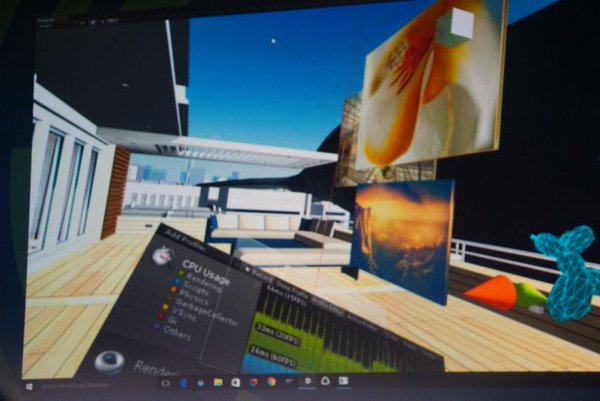Google, Unity Showcase VR Development Tools At Summit 2016 Keynote
The Vision VR/AR Summit is a gathering for developers in the new frontier of virtual and augmented reality. With HMDs from Oculus and Valve/HTC coming in the next few months, more people will test the waters of VR development, and this year’s keynote introduced new tools for developers.
Develop VR Content...In VR
The virtual reality space is home to many different experiences such as games, movies and other interactive forms of entertainment. For the developer, these titles are created on a conventional PC. However, Unity wants to change the way VR content is created with its new platform called Unity VR Scene Editor.
Instead of utilizing a PC, the development process is pushed to the VR space. A quick demo from principal designer Timoni West showed that you can easily move and scale 3D assets in the virtual world. Obviously, this means that all of your actions are motion based. In addition to the Rift HMD, West also used the Oculus Touch controllers to manipulate objects in VR.
Unity VR Scene Editor is still in the works, but it already has a rival in Epic Games. Last week, the company showed off its Unreal Editor VR app that also allows development in VR. It’s still too early to tell how the tools stack up against each other, but the fact remains that developers will get more tools to use as they venture into this new frontier. There are many differences between traditional game development and creating a VR game, and the ability to develop VR titles in VR could make it easier for developers to create content.
Learn To Develop For Cardboard
Google’s entry-level Cardboard is still making waves, and the company wants its users to learn how to create VR content for Cardboard with the help of Cardboard Design Lab. You can download the app as-is from the Google Play store, but the company also made it available, open source, on GitHub. This gives users access to the app’s source code, assets and other elements that can be used to improve the Cardboard Design Lab structure or to create a new tutorial experience.
For Google, development isn’t constrained to professionals only; it wants amateurs to contribute to the Cardboard marketplace as well. By switching to an open source format, Google provided another method for more users to learn about VR and the development process.
More To Come
There are bound to be more advances in VR development in the future, but the products from Unity and Google are some of the first tools specific to virtual reality. Obviously, Unity VR Scene Editor has a specific audience, whereas the Cardboard Design Lab is more for the masses, but both tools can have a significant impact on content creators. New and unique experiences are on the way for VR, and some of it will be created with the help of Google and Unity.
Get Tom's Hardware's best news and in-depth reviews, straight to your inbox.
Follow Rexly Peñaflorida II @Heirdeux. Follow us @tomshardware, on Facebook and on Google+.
Rexly Peñaflorida is a freelance writer for Tom's Hardware covering topics such as computer hardware, video games, and general technology news.

